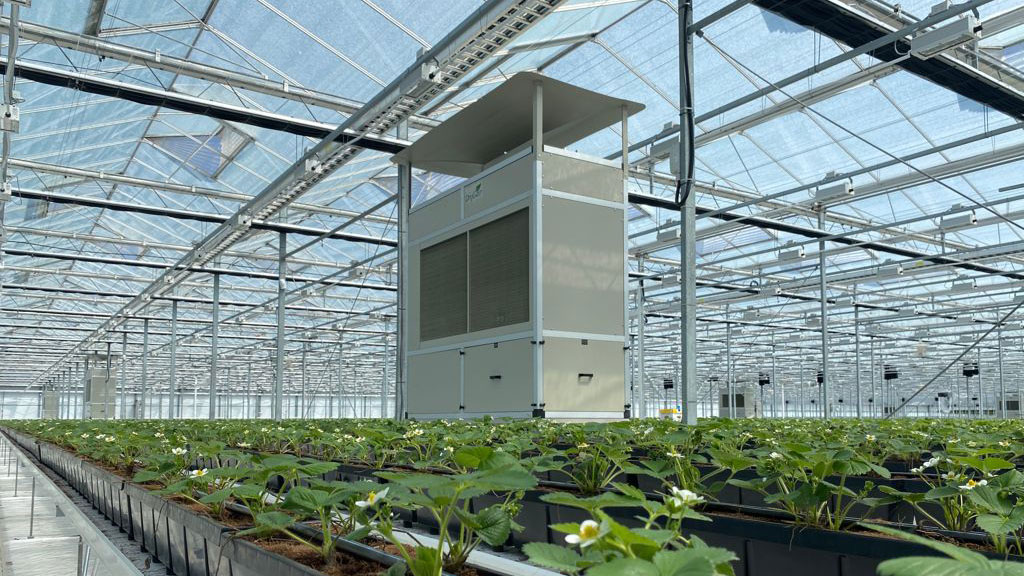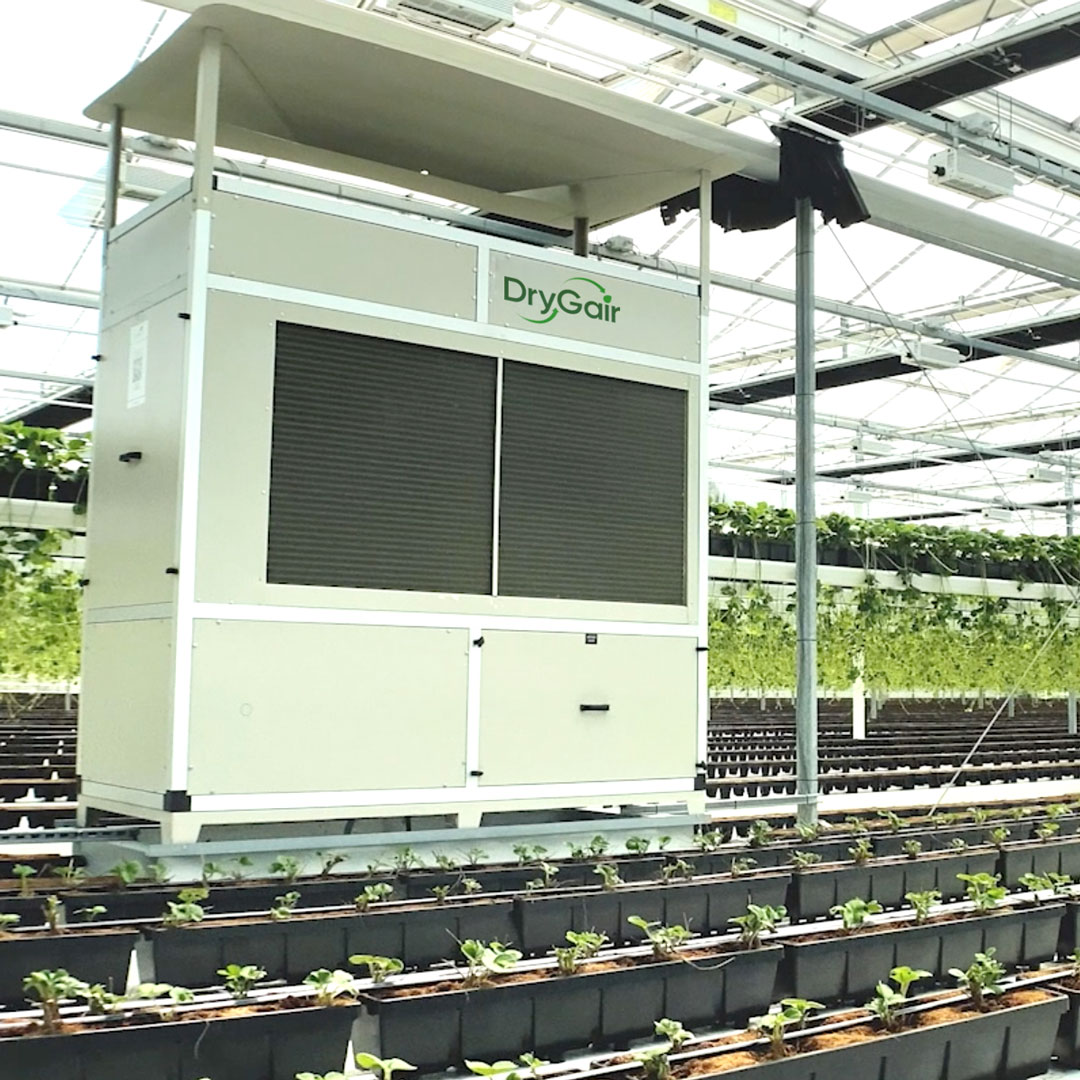What Are the Ideal Conditions for a Strawberry Greenhouse?
Strawberries are an extremely popular fruit, enjoyed around the world. However, strawberries only grow under specific conditions, and aren’t naturally available all year. Growing strawberries in a greenhouse is a great way to lengthen the growing season and produce high-quality strawberries year-round.
Strawberry greenhouses are popular around the globe, being especially prominent in North America and Europe. By providing ideal strawberry growing conditions, including temperature and humidity, you can ensure large yields and high-quality fruit. This grow guide from our experts breaks down the necessary conditions needed to grow strawberries in a greenhouse.
Before we dive into climate conditions, it’s important to understand the different strawberry varieties. There are several types of strawberries, and each variety of strawberry is slightly different. The main difference between the different cultivars is in their fruit-bearing schedules:
- June bearing strawberries generally produce a single concentrated crop in early summer. These strains are ideal for growing in hanging baskets.
- Ever bearing strawberries usually produce two crop cycles, one in early summer and one in early fall.
- Day neutral strawberry varieties are the most versatile, producing fruit throughout most of the growing season. Day neutral strains are considered ideal for hydroponic strawberry farming.

What Are the Ideal Greenhouse Strawberry Growing Conditions?
Strawberry plants have specific requirements. In an open field, they may be susceptible to fluctuations in temperature, radiation, water (if not irrigated), etc. They will only grow during certain seasons as well. In most of the northern hemisphere, the growing season is limited to summer to early autumn.
Greenhouse strawberry production lets growers extend their growing season, providing the best conditions for their strawberry plants, despite the weather.
There are many advantages to growing in a greenhouse. Greenhouse grown strawberries can span a longer production period, supplying the fruit well beyond summertime. Additionally, growers can produce larger yields and much higher fruit quality.
What Is the Ideal Temperature for Greenhouse Strawberry Production?
The most basic benefit of growing under cover is temperature control. Growing in a controlled, or semi-controlled environment lets you provide the most beneficial temperatures for your plants.
Like most crops, strawberry plants have particular temperature requirements. One of which is a gradual increase in temperature at the start of the season. This mimics the transition from winter to summer. This helps the plants grow larger, so they can produce and manage more fruit later.
Strawberry greenhouse temperatures should therefore begin around 8°C (46°F) at night and 16°C (60°F) during the day. Over several weeks you should gradually increase temperatures. Reaching 10-12°C (50-54°F) at night, and 20-24°C (68-75°F) during the day.
When strawberry plants flower, it’s best to maintain a temperature range of 16-20°C (60-68°F). However, once the plants bear fruit, a range of 15-16°C is ideal for maturation.
It’s important to note that ideal temperatures differ not only for different development stages, but also between strawberry varieties. They also depend on other environmental conditions, such as humidity, lighting, etc.
In general, when temperatures are too low, or too high, strawberry plants will suffer. This leads to smaller plants and lower fruit count. It may even make them unable to produce fruit at all. So, maintaining the right temperatures is crucial for a successful grow.
Ideal Temperatures for Strawberry Cultivation:
- Daytime – 20-24°C (68-75°F)
- Nighttime – 10-12°C (50-54°F)
How to Create Optimal Greenhouse Temperatures for Strawberries
There are many ways to control the temperature in modern greenhouse production. The best method for you depends on your local climate, greenhouse type and build, etc.
Generally, strawberries prefer cool conditions during the night and warm during the day. So, some growers may find they need to heat more, while others may need to cool more often.
Some common ways to heat or cool a greenhouse include heating pipes with boilers or chillers, HVAC, wet pads, etc.
What Is the Ideal Humidity for Greenhouse Strawberry Production?
Humidity is one of the most important aspects of greenhouse cultivation. Like temperature, it has a major impact on the plants, affecting their growth, fruit development, fruit quality, and yield size.
In order to grow the best strawberry crops, and maximize yield potential, it’s important to provide the ideal humidity range.
The ideal relative humidity range for strawberry greenhouses is 60-75% RH. In terms of vapor pressure deficit (VPD), that’s 0.3-1.2 kPa, depending on the temperature.
Ideal Humidity Stimulates Strawberry Growth
Humidity plays a huge role in the plants’ natural processes. It can affect their ability to take in nutrients, which in turn slows down growth, fruit development, etc.
High humidity is an extremely common issue in greenhouse production. All plants constantly transpire, releasing moisture to the air. So, in a closed environment, humidity will inevitably rise.
However, humidity poses a problem for strawberry plants. High humidity means the air is saturated, or close to being saturated, with water vapor, and can’t contain more moisture. This creates a situation in which your strawberry plants won’t be able to transpire.
Transpiration is critical for any plant. Without it, the roots won’t absorb water from the soil, and the plant won’t receive the nutrients it needs.
On the other hand, low humidity may have a similar effect. The dry conditions cause the plant to increase transpiration, losing excessive amounts of water. In this case, the plants experience stress, which leads them to close their stomata in an attempt to retain water.
This too stops transpiration and leads to similar results. When it comes to strawberries, low humidity is also associated with tip burn, which affects fruit quality.
High Humidity Leads to Mildew and Diseases
Humidity doesn’t just impact the plants nutrient uptake. It also plays a big role in disease and mold development. Under humid or wet conditions, common diseases, such as botrytis or powdery mildew, may develop.
These diseases have a significant negative impact on crops. They slow down, or even stop development, and reduce the overall quality of fruit. In extreme cases, they may even kill entire strawberry crop cycles.
Many of the most common diseases require high humidity in order to break out. So, by maintaining an ideal humidity range and avoiding high humidity, you can prevent outbreaks. Preventing diseases through humidity control is organic and reduces the need for toxic pesticides and fungicides.
Some additional tips for a disease free strawberry greenhouse include maintaining a clean environment. Debris and other organic matter lying on the soil acts as a hotbed for bacteria and pests.
You should also water straight to the soil, avoiding overhead irrigation. It’s also important to note that strawberry plants have shallow roots. So, you should plant them in a preferably sandy, well draining soil, with frequent watering to keep the soil moist.
Ideal Relative Humidity & VPD for Strawberry Cultivation:
- Relative Humidity – 60-75% RH
- VPD – 3-1.2 kPa
How to Maintain Optimal Humidity in Strawberry Greenhouses
Greenhouse humidity control is necessary for successful strawberry cultivation. However, there are different ways to do so, and some methods are more effective and efficient than others.
Traditionally, greenhouse operators control humidity through ventilation and heating. Opening the greenhouse screens, vents, and windows lets the moisture out of the space. This method may be effective at times. But it’s highly inefficient, and often won’t provide a complete solution to humidity.
When you release air from the greenhouse, you also release heat. In this case, you must keep heating constantly in order to provide optimal temperatures. This is one of the biggest inefficiencies in greenhouse cultivation and leads to very high energy costs.
Additionally, releasing moisture through ventilation doesn’t always work. If weather conditions aren’t favorable, you may not achieve a humidity reduction inside. This includes when it’s cold, cloudy, rainy, or humid outside.
Growers who rely on ventilation may face situations in which they can’t reduce humidity. Unfortunately, even a few hours of high humidity may lead to disease development, harming the entire cycle.
The most effective and efficient method to control humidity in modern horticulture, is using dedicated, active dehumidifiers, such as DryGair. A dehumidifier, that’s designed for greenhouse humidity control, actively extracts moisture from the air, without requiring ventilation. This provides complete coverage and protection from high humidity, at all times.
Using dehumidifiers also means you don’t have to open the greenhouse or ventilate. So you can retain heat and CO2 inside the greenhouse. This method can save up to 70% on heating costs. In fact, growers using DryGair around the world report savings averaging 50%.
So, using dehumidifiers for humidity control doesn’t just optimize strawberry growing conditions. It lets growers optimize their entire operation and reduce costs, by allowing the greenhouse to remain closed and insulated.





